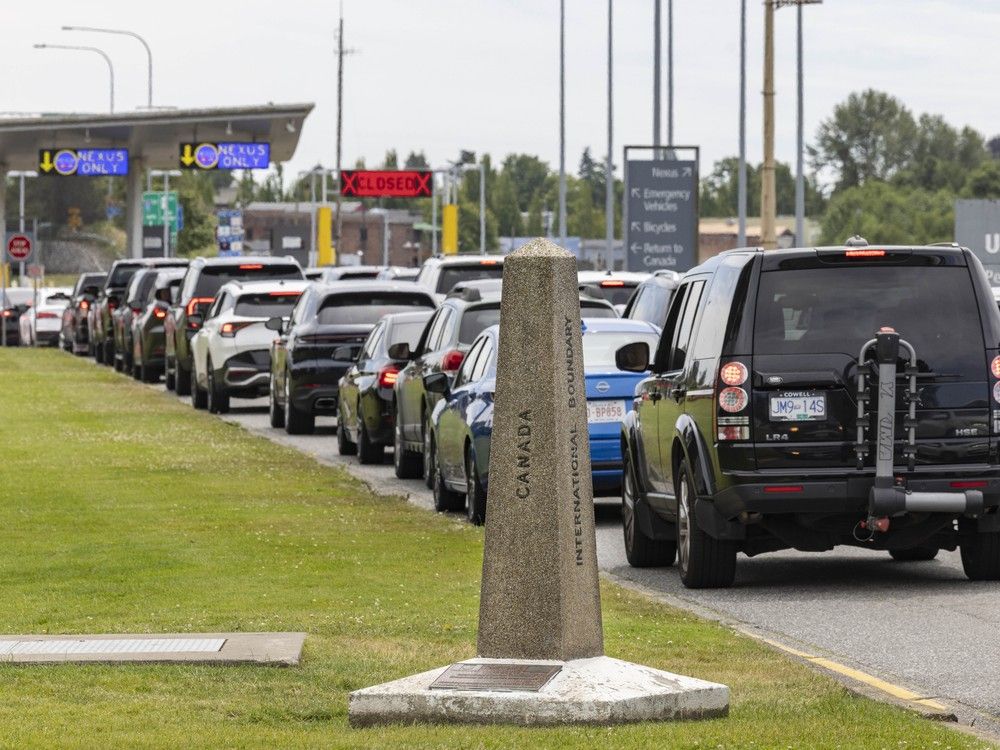
The number of American visitors to B.C. has dropped over the past several months as trade-war tensions have escalated between Canada and the U.S.
The number of U.S. cars heading north into B.C. was down by almost seven per cent from February to July, compared to the same time period last year, according to data from Statistics Canada .
That is still far less than the 40 per cent decline in B.C. visitors heading to the U.S. during the same period.
And while some B.C. tourism destinations have suffered from fewer U.S. travellers, the shift has mostly been offset “by a notable increase in Canadian visitors,” Clare Mason, a communications director at wrote in an email.
“(Tourism) operators are reporting a shift in where their visitors are coming from — particularly a surge in domestic travel from across Canada,” Mason wrote.
About 650,000 U.S. vehicles crossed into B.C. between February and July this year, about 47,000 fewer than the same period in 2024, before President Donald Trump announced tariffs on Canadian and Mexican goods and before he began suggesting that Canada should become a U.S. state.
At the start of 2025, about 20,000 more U.S. cars entered the province in January compared to the previous year. But tables started to turn in
February when several thousand fewer Americans drove to B.C. The trend has continued since, with thousands fewer Americans coming north each month.
The Pacific Highway crossing in Surrey experienced the biggest decline in U.S. travellers — 15 per cent fewer Americans came north from February to July of this year compared to last.
The Aldergrove crossing had 9.6 per cent fewer crossings, and the Douglas (Peace Arch) crossing saw a 7.6 per cent decline.
B.C. was the second-most popular province for American tourists in 2024, after Ontario, according to federal data.
The decline in U.S. tourists to B.C. comes even as the Canadian dollar has continued to fall in value against the American dollar.
A number of high-profile summer conferences in Vancouver this summer — including a record-breaking 35,000 attendees at an Alcoholics Anonymous International conference in early July — has offset the drop in U.S. visitors, according to Suzanne Walters, communications director at Destination Vancouver, a non-profit promoting tourism in Vancouver.
Roughly 2.7 million U.S. tourists are expected to visit Vancouver this year and next, according to Destination Vancouver estimates, although Walters acknowledged shifting political and economical environments mean “conditions continue to change.”
U.S. travellers made up nearly a quarter of all tourist visits to Vancouver in 2024, according to Destination Vancouver.